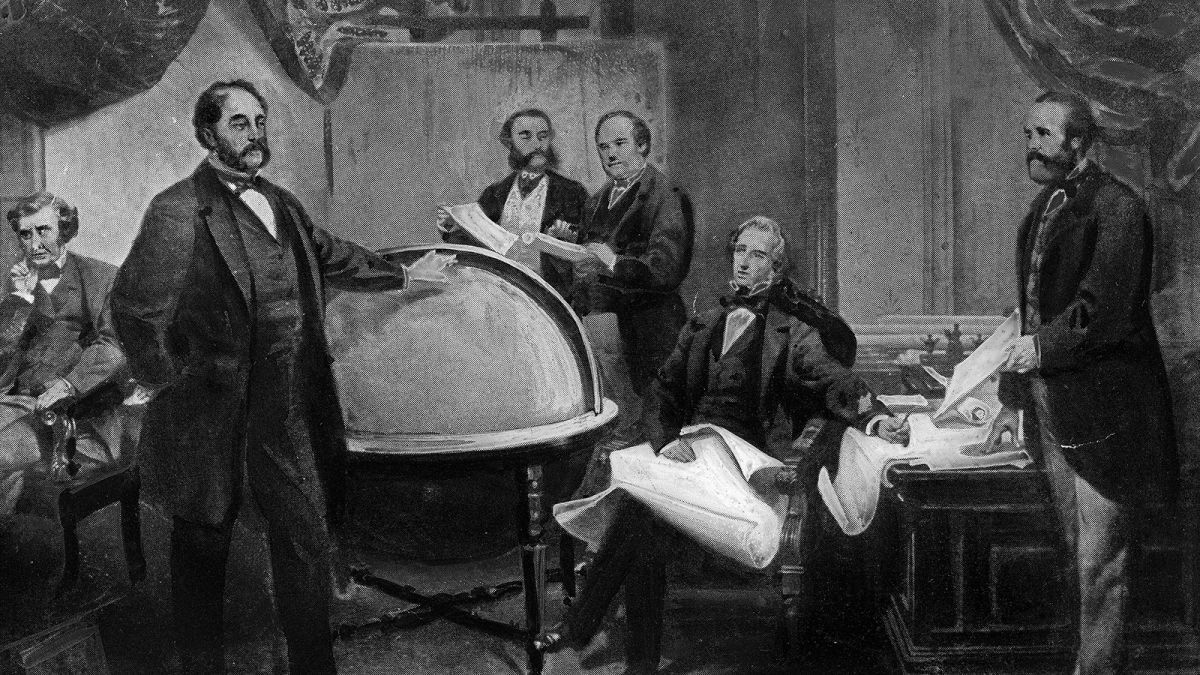
Did you know that the United States bought Alaska from Russia for just $7.2 million? This historic deal, known as the Russia Alaska Purchase, happened in 1867. At the time, many Americans thought it was a waste of money and called it "Seward's Folly" after Secretary of State William Seward, who negotiated the purchase. However, this "folly" turned out to be a treasure trove of natural resources. From gold to oil, Alaska has proven to be incredibly valuable. The purchase added over 586,000 square miles to the U.S., making it the largest state. Curious about more interesting facts? Let's dive into 35 fascinating details about this monumental transaction!
Key Takeaways:
- The Alaska Purchase in 1867 added a vast territory to the U.S. for just two cents per acre, leading to economic growth, statehood, and cultural preservation.
- The purchase of Alaska from Russia was initially mocked but later proved to be strategically and economically beneficial, shaping the state's unique culture and environment.
The Russia-Alaska Purchase: An Overview
The Russia-Alaska Purchase, also known as the Alaska Purchase, was a significant event in American history. It involved the acquisition of Alaska from Russia by the United States in 1867. Here are some fascinating facts about this historic deal.
-
The purchase price for Alaska was $7.2 million, which equates to about two cents per acre.
-
The treaty was signed on March 30, 1867, by U.S. Secretary of State William H. Seward and Russian Minister Eduard de Stoeckl.
-
Alaska was officially transferred to the United States on October 18, 1867, a day now celebrated as Alaska Day.
-
Many Americans initially mocked the purchase, calling it "Seward's Folly" or "Seward's Icebox."
-
The purchase added 586,412 square miles of territory to the United States.
Reasons Behind the Purchase
Understanding why the U.S. wanted Alaska and why Russia was willing to sell it provides deeper insight into this historical event.
-
Russia feared losing Alaska without compensation in a future conflict, especially with Britain.
-
The Crimean War had drained Russia's resources, making Alaska less valuable to them.
-
The U.S. saw Alaska as a strategic location for expanding its influence in the Pacific.
-
The discovery of gold in Alaska later justified the purchase, leading to the Klondike Gold Rush.
-
The purchase helped improve U.S.-Russia relations during a time of growing tensions in Europe.
The Negotiation Process
The negotiation process was complex and involved several key figures and events.
-
William H. Seward had long been interested in expanding U.S. territory.
-
Eduard de Stoeckl played a crucial role in convincing the Russian Emperor to sell Alaska.
-
The negotiations took place in Washington, D.C., and were conducted in secrecy.
-
The U.S. Senate ratified the treaty on April 9, 1867, with a vote of 37 to 2.
-
The payment was made in gold, which was transported to Russia by ship.
Impact on Alaska and Its People
The purchase had significant effects on the native populations and the development of the region.
-
The indigenous peoples of Alaska, including the Aleut, Inuit, and Tlingit, were not consulted in the sale.
-
The U.S. government initially did little to govern or develop Alaska, leading to a period of neglect.
-
The discovery of natural resources, such as gold and oil, eventually spurred economic growth.
-
Alaska became a U.S. territory in 1912 and achieved statehood in 1959.
-
The purchase paved the way for the establishment of national parks and wildlife refuges in Alaska.
Economic and Strategic Benefits
The economic and strategic benefits of the Alaska Purchase became evident over time.
-
Alaska's vast natural resources, including oil, gas, and minerals, have contributed significantly to the U.S. economy.
-
The state's fisheries are among the most productive in the world, providing a major source of seafood.
-
Alaska's strategic location has been important for military defense, especially during World War II and the Cold War.
-
The Trans-Alaska Pipeline, completed in 1977, has transported billions of barrels of oil from the North Slope to Valdez.
-
Tourism has become a major industry in Alaska, attracting millions of visitors each year.
Cultural and Environmental Significance
Alaska's unique culture and environment have made it a valuable addition to the United States.
-
The state is home to diverse wildlife, including bears, moose, and bald eagles.
-
Alaska's indigenous cultures have preserved their traditions and languages despite historical challenges.
-
The state's stunning landscapes, from glaciers to mountains, attract nature enthusiasts and adventurers.
-
The Iditarod Trail Sled Dog Race, held annually, celebrates Alaska's history and culture.
-
Alaska's long summer days and harsh winters create a unique living experience for its residents.
Fun and Lesser-Known Facts
Here are some fun and lesser-known facts about the Russia-Alaska Purchase.
-
The purchase was almost delayed because the U.S. Treasury didn't have enough gold on hand.
-
Alaska was initially governed by the U.S. Army, then the Treasury Department, and finally the Navy.
-
The first American flag raised in Alaska was sewn by a group of women in Sitka.
-
The purchase included the Aleutian Islands, which stretch towards Russia.
-
Some historians believe that Russia sold Alaska to strengthen its relationship with the U.S. against British influence.
The Lasting Impact of the Russia-Alaska Purchase
The Russia-Alaska Purchase changed the course of history for both nations. For the United States, acquiring Alaska meant access to vast natural resources like gold, oil, and fish. This purchase also expanded U.S. territory significantly, adding over 586,000 square miles. For Russia, selling Alaska provided much-needed funds and allowed them to focus on their interests in Asia.
This deal, often called "Seward's Folly" at the time, proved to be a strategic and economic win for the United States. It also marked a turning point in U.S.-Russia relations, setting the stage for future diplomatic interactions. The Alaska Purchase remains a fascinating chapter in history, showcasing the foresight and bold decisions that shape nations. Understanding this event helps us appreciate the complex tapestry of global politics and economics.
Frequently Asked Questions
Was this page helpful?
Our commitment to delivering trustworthy and engaging content is at the heart of what we do. Each fact on our site is contributed by real users like you, bringing a wealth of diverse insights and information. To ensure the highest standards of accuracy and reliability, our dedicated editors meticulously review each submission. This process guarantees that the facts we share are not only fascinating but also credible. Trust in our commitment to quality and authenticity as you explore and learn with us.


